Abstract
Idiopathic torsion dystonia (ITD) has long been considered to be genetically determined, but the pattern of inheritance has been unclear. It has been suggested that inheritance may differ in Jews and non-Jews. In the present study, data gathered in a nationwide survey of ITD in Israel were analysed. Between 1969 and 1980, 47 patients were collected, of whom 40 were of European origin. In these European Jews, the ITD frequency was about 1:23 000 live births, which was five-fold greater than in Jews of Afro-Asian origin. Assuming that all cases fit the same genetic model, an X linked or a simple autosomal recessive model of inheritance did not agree well with our data. An autosomal dominant model with low penetrance could have accounted for our observations and would yield an ITD gene frequency in European Jews of 3 to 4:100 000. In view of the increased ages of their fathers, the isolated cases may have included some new mutations. Multifactorial inheritance was also possible. However, it may be inappropriate to assume that all cases have the same genetic basis, or even that all are inherited.
Full text
PDF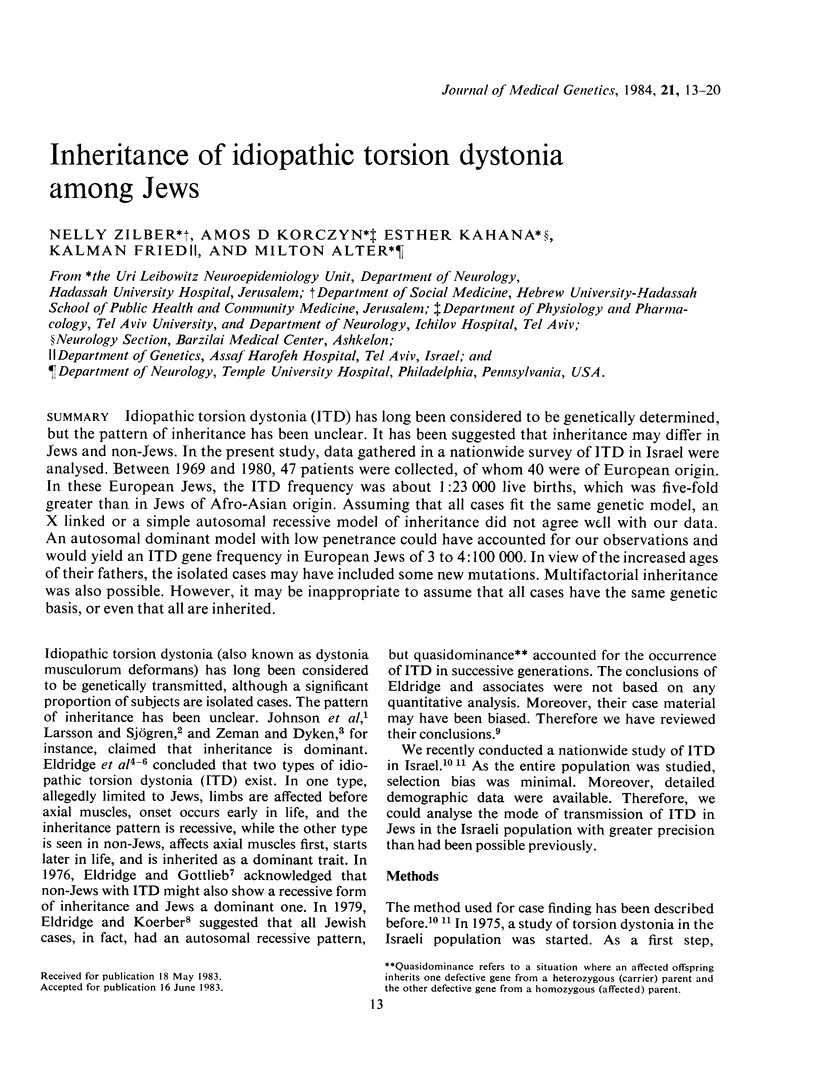
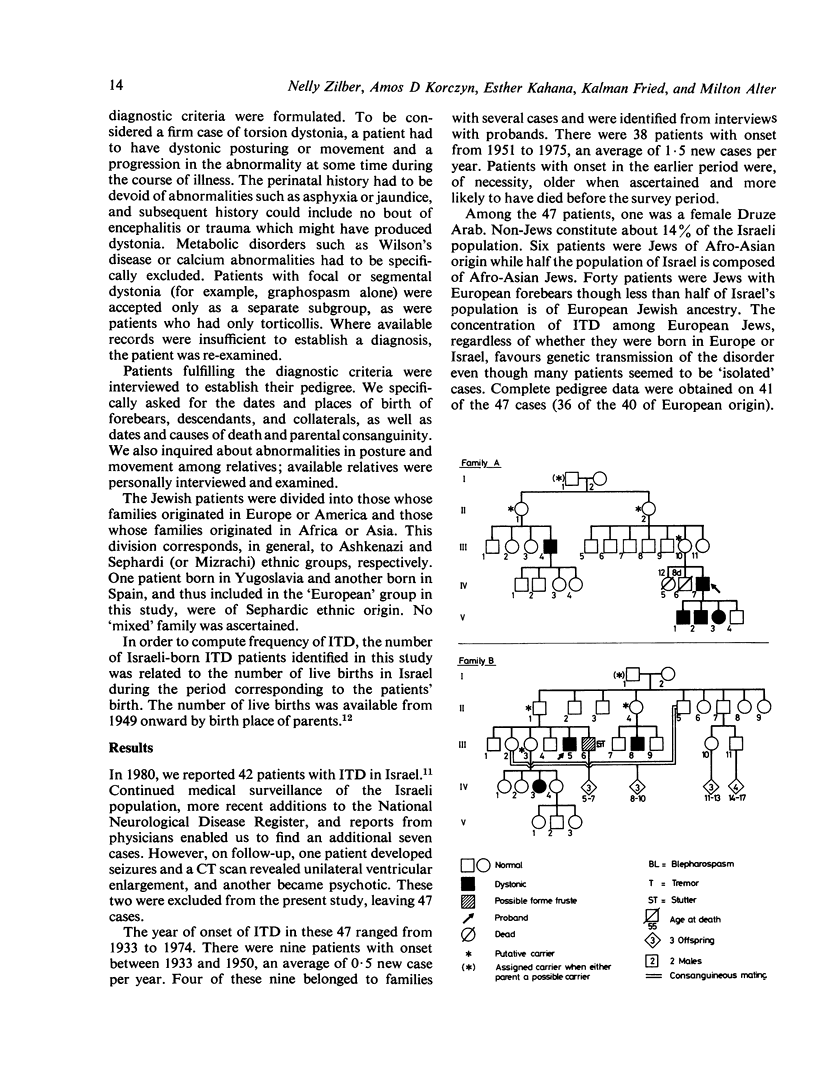
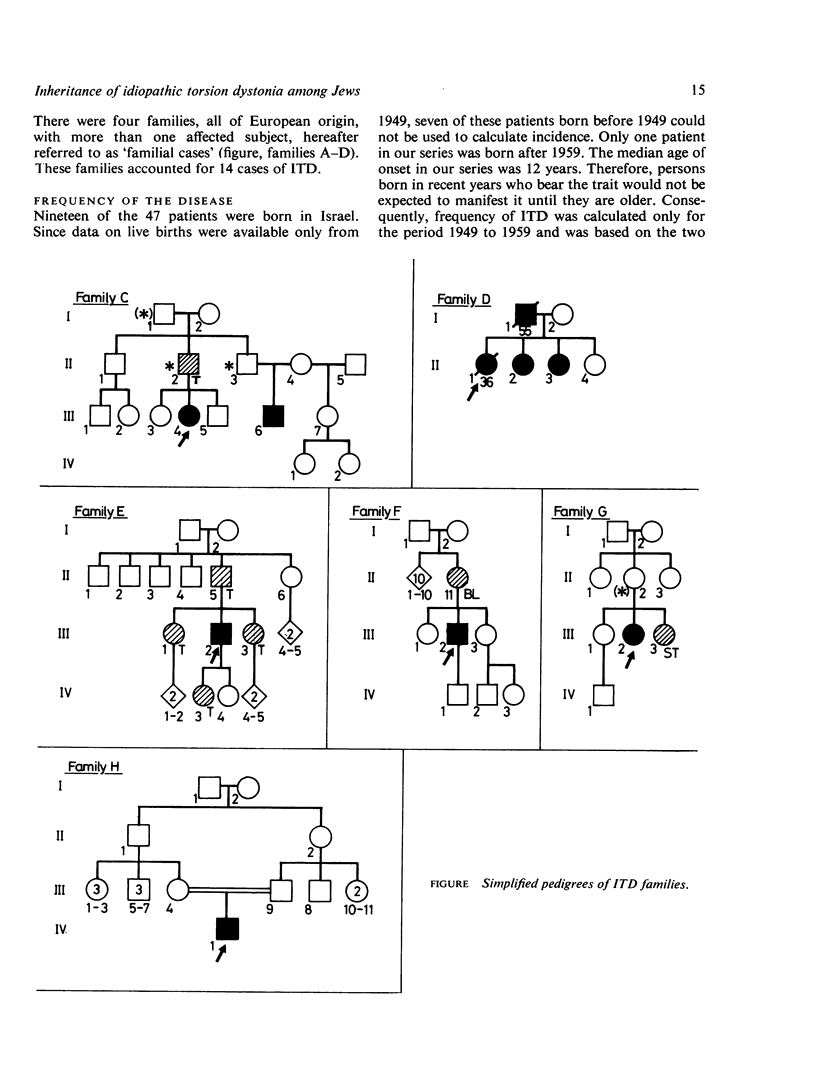
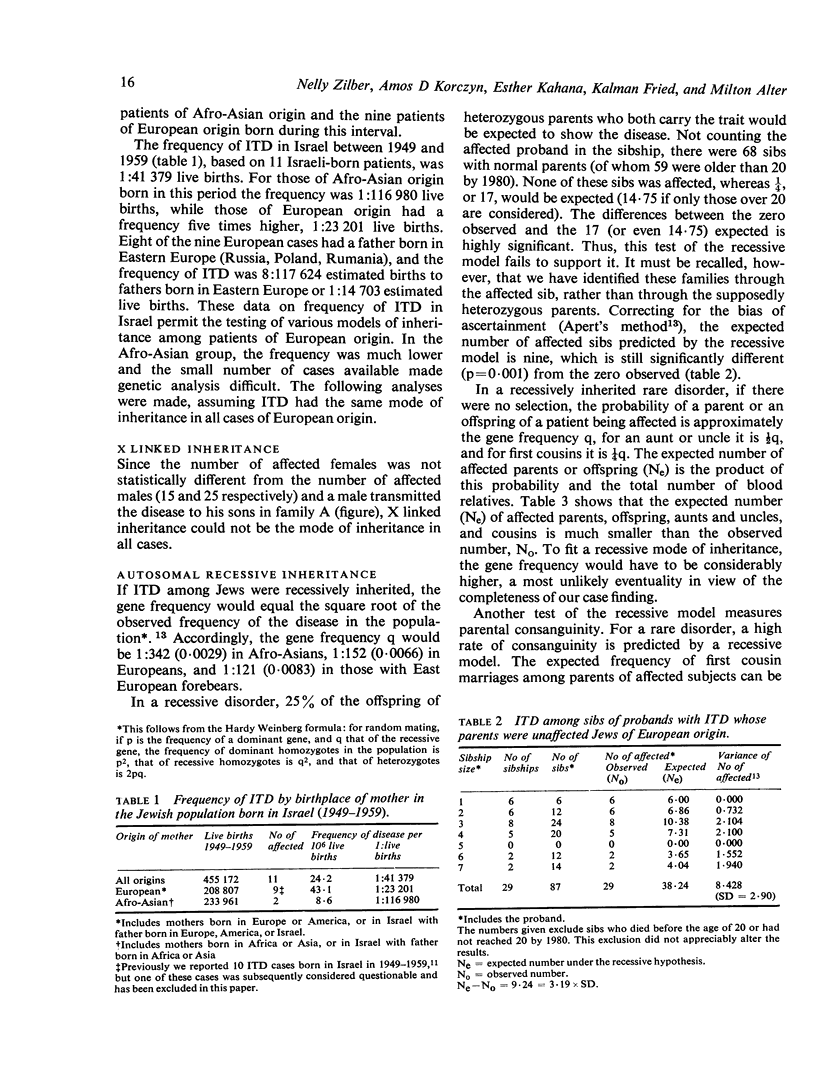


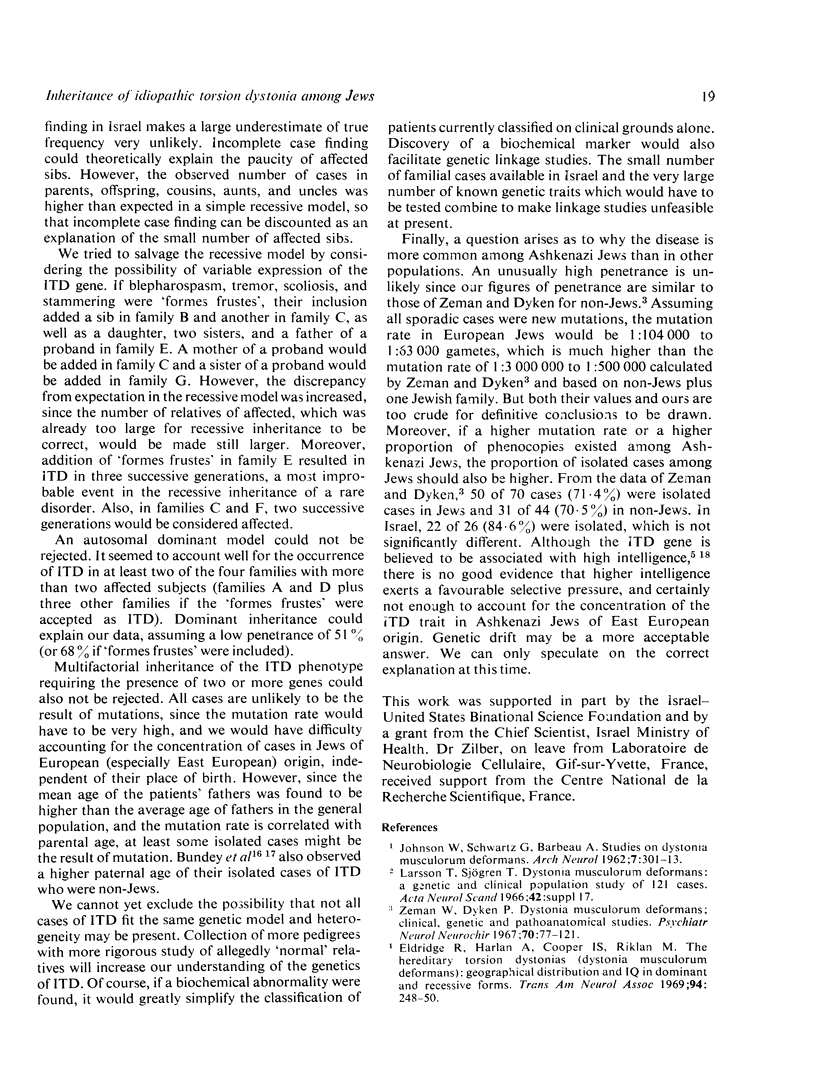
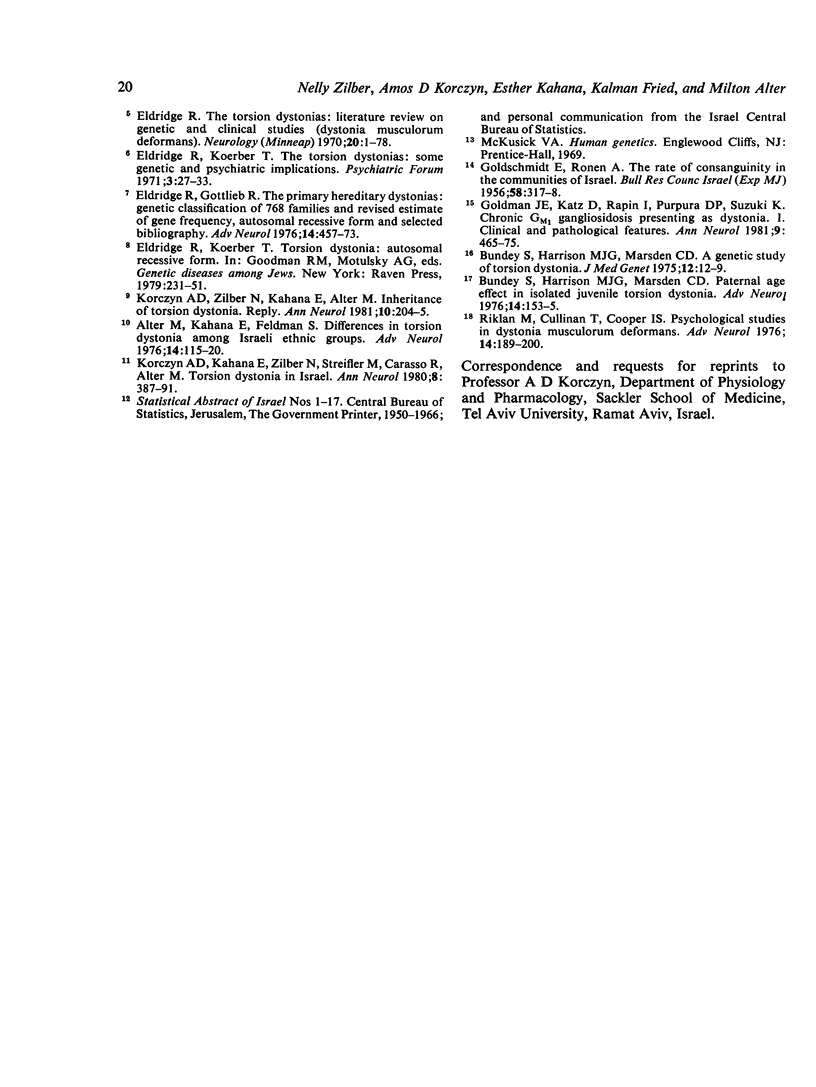
Selected References
These references are in PubMed. This may not be the complete list of references from this article.
- Bundey S., Harrison M. J., Marsden C. D. A genetic study of torsion dystonia. J Med Genet. 1975 Mar;12(1):12–19. doi: 10.1136/jmg.12.1.12. [DOI] [PMC free article] [PubMed] [Google Scholar]
- Bundey S., Harrison M. J., Marsden C. D. Paternal age effect in isolated juvenile torison dystonia. Adv Neurol. 1976;14:153–155. [PubMed] [Google Scholar]
- Eldridge R., Gottlieb R. The primary hereditary dystonias: genetic classification of 768 families and revised estimate of gene frequency, autosomal recessive form, and selected bibliography. Adv Neurol. 1976;14:457–474. [PubMed] [Google Scholar]
- Eldridge R., Harlan A., Cooper I. S., Riklan M. The hereditary torsion dystonias (dystonia musculorum deformans): Geographical distribution and IQ in dominant and recessive forms. Trans Am Neurol Assoc. 1969;94:248–250. [PubMed] [Google Scholar]
- Eldridge R. The torsion dystonias: literature review and genetic and clinical studies. Neurology. 1970 Nov;20(11):1–78. doi: 10.1212/wnl.20.11_part_2.1. [DOI] [PubMed] [Google Scholar]
- Fahn S., Eldridge R. Definition of dystonia and classification of the dystonic states. Adv Neurol. 1976;14:1–5. [PubMed] [Google Scholar]
- Goldman J. E., Katz D., Rapin I., Purpura D. P., Suzuki K. Chronic GM1 gangliosidosis presenting as dystonia: I. Clinical and pathological features. Ann Neurol. 1981 May;9(5):465–475. doi: 10.1002/ana.410090509. [DOI] [PubMed] [Google Scholar]
- JOHNSON W., SCHWARTZ G., BARBEAU A. Studies on dystonia musculorum deformans. Arch Neurol. 1962 Oct;7:301–313. doi: 10.1001/archneur.1962.04210040053005. [DOI] [PubMed] [Google Scholar]
- Korczyn A. D., Kahana E., Zilber N., Streifler M., Carasso R., Alter M. Torsion dystonia in Israel. Ann Neurol. 1980 Oct;8(4):387–391. doi: 10.1002/ana.410080409. [DOI] [PubMed] [Google Scholar]
- Riklan M., Cullinan T., Cooper I. S. Psychological studies in dystonia musculorum deformans. Adv Neurol. 1976;14:189–200. [PubMed] [Google Scholar]


